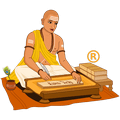























Sunrise07:17
Sunset17:14
Moonrise00:42, Jan 11
Moonset11:05
Shaka Samvat-3337 Plava
Vikram Samvat-3202 Pramadi
Gujarati Samvat-3202 Pramadi
Amanta MonthPhalguna
Purnimanta MonthChaitra
WeekdayShaniwara
PakshaKrishna Paksha
TithiSaptami upto 08:58
NakshatraMula upto 01:41, Jan 11
YogaVyatipata upto 11:40
KaranaBava upto 08:58
KaranaBalava upto 21:25
Pravishte/Gate12
Rahu Kalam09:46 to 11:01
Gulikai Kalam07:17 to 08:31
Yamaganda13:30 to 14:45
Abhijit11:56 to 12:35
Dur Muhurtam07:17 to 07:56
Dur Muhurtam07:56 to 08:36
Amrit Kalam18:52 to 20:34
Varjyam08:38 to 10:20
Varjyam23:59 to 01:41, Jan 11
Notes: All timings are represented in 24-hour notation in local time of Lancaster, United States with DST adjustment (if applicable).
Hours which are past midnight are suffixed with next day date. In Panchang day starts and ends with sunrise.


 Mithuna 15:25
Mithuna 15:25 Punarvasu 21:36
Punarvasu 21:36

 Simha
Simha Magha 26:04+
Magha 26:04+

 Simha
Simha P Phalguni 28:24+
P Phalguni 28:24+

 Simha 11:02
Simha 11:02 U Phalguni 31:04+
U Phalguni 31:04+

 Tula
Tula Chitra 13:05
Chitra 13:05

 Vrishchika
Vrishchika Anuradha 21:54
Anuradha 21:54

 Dhanu
Dhanu P Ashadha 26:30+
P Ashadha 26:30+

 Dhanu 08:35
Dhanu 08:35 U Ashadha 26:33+
U Ashadha 26:33+

 Makara 13:11
Makara 13:11 Dhanishtha 24:23+
Dhanishtha 24:23+

 Kumbha 14:33
Kumbha 14:33 P Bhadrapada 19:53
P Bhadrapada 19:53

 Meena 14:15
Meena 14:15 Revati 14:15
Revati 14:15

 Mithuna
Mithuna Ardra 27:08+
Ardra 27:08+

 Mithuna 21:14
Mithuna 21:14 Punarvasu 27:21+
Punarvasu 27:21+

 Karka 29:47+
Karka 29:47+ Ashlesha 29:47+
Ashlesha 29:47+

 Simha
Simha Magha 07:52
Magha 07:52

 Kanya
Kanya U Phalguni 13:12
U Phalguni 13:12In Hindu Calendar, the day starts with local sunrise and ends with next day local sunrise. As sunrise time is different for all cities, Hindu Calendar made for one city is not valid for any other city. Hence it is important to use location based Hindu Calendar, like this website. Further, each Hindu day consists of five elements, which are called angas. These five elements are -
In Hindu Calendar, all five elements together are called Panchang. (In Sanskrit: Panchang = Pancha (five) + Ang (part)). Hence Hindu Calendar which shows all five elements for each day is called Panchang. In South India Panchang is known as Panchangam.
When Hindu Calendar includes Muslims, Sikh, Christian, Buddhist and Jain festivals, including national holidays, it is called as Indian Calendar.